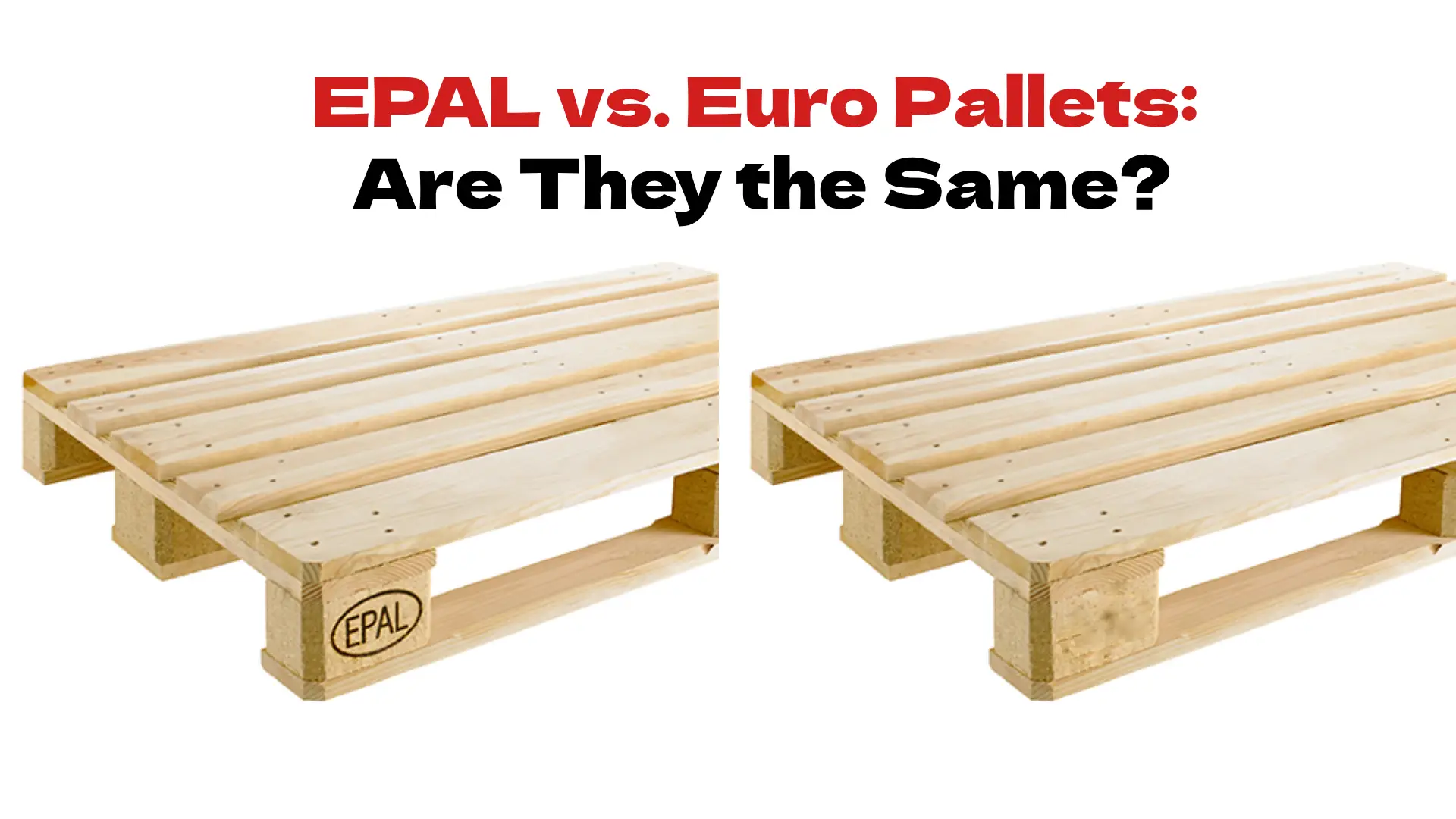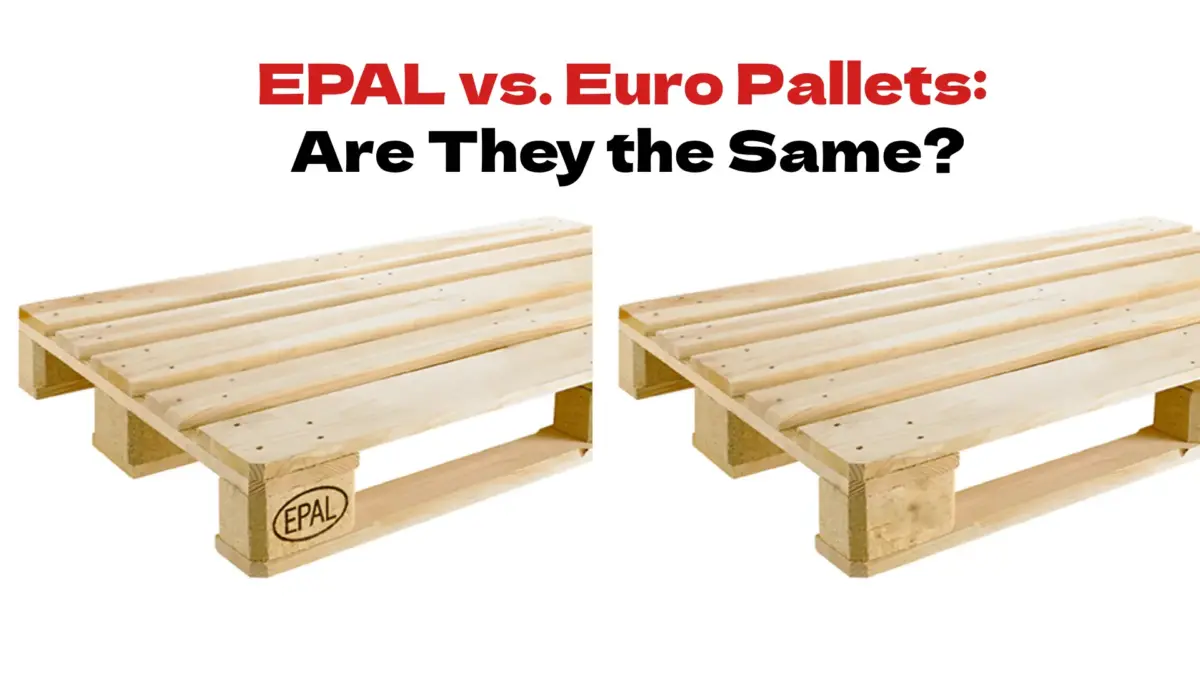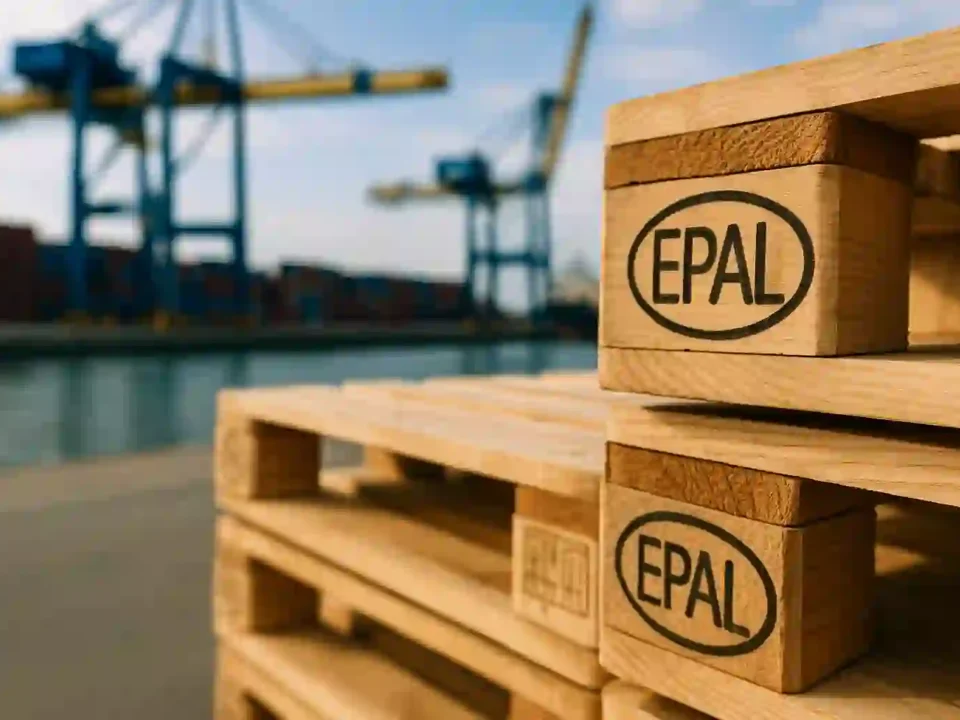
Top 5 Benefits of EPAL Pallets in the Logistics Industry
May 28, 2025
EPAL Pallet Sizes: Complete Guide with Dimensions
June 21, 2025Many people think EPAL and Euro pallets are the same. But they’re not. Knowing the difference between EPAL vs Euro Pallets helps avoid costly mistakes in shipping and logistics. This guide shows what makes them different and which one you should choose.
What Is a Euro Pallet?
Euro pallets began with the European railways. They use a standard size of 1200 x 800 mm. You’ll find them across Europe in trucks, warehouses, and shipping yards. But not all Euro pallets are the same. The term refers to size and use, not quality or certification.
 What Is an EPAL Pallet?
What Is an EPAL Pallet?
EPAL pallets adhere to the standard size of 1200 x 800 mm. But they go further. They carry the EPAL logo, proving they meet strict quality rules. EPAL stands for the European Pallet Association. These pallets are heat-treated, ISPM 15-compliant, and stamped with origin and license numbers.
Learn in detail about EPAL Pallets.
Key Difference Between EPAL and Euro Pallets
Though similar in size, the difference lies in quality, trust, and certification:
| Feature | EPAL Pallets | Euro Pallets |
|---|---|---|
| Size | 1200×800 mm | 1200×800 mm |
| Certification | Yes | Not always |
| Heat Treated | Yes | Varies |
| EPAL Mark | Yes | No |
| Global Trust | High | Medium |
- Certification: EPAL pallets follow a strict process. Not all Euro pallets do.
- Stamp/Marking: EPAL pallets show a branded mark. It proves the pallet is approved.
- Quality Checks: EPAL pallets undergo routine inspections. Euro pallets may not.
- Traceability: EPAL pallets show where they were made.
- Usage Risk: Euro pallets without EPAL may break more easily or fail customs.
Why Choose EPAL Over Uncertified Euro Pallets
EPAL pallets reduce risk. They protect your goods and business. With ISPM 15 compliance, they work for international shipping. Their quality saves money by lasting longer. Reuse and repair add even more value.
When a Regular Euro Pallet May Be Enough
You might use Euro pallets when shipping locally. If you don’t require heat treatment or certification, a standard Euro pallet may suffice. They also suit short-term or low-value shipments.
Conclusion: EPAL vs Euro Pallets: Which One Is Better for You?
Choose EPAL pallets for safety, trust, and global use. They pass quality checks and won’t slow your shipments at customs. Use Euro pallets for local or basic transport jobs. Think about what you ship and where it goes.




